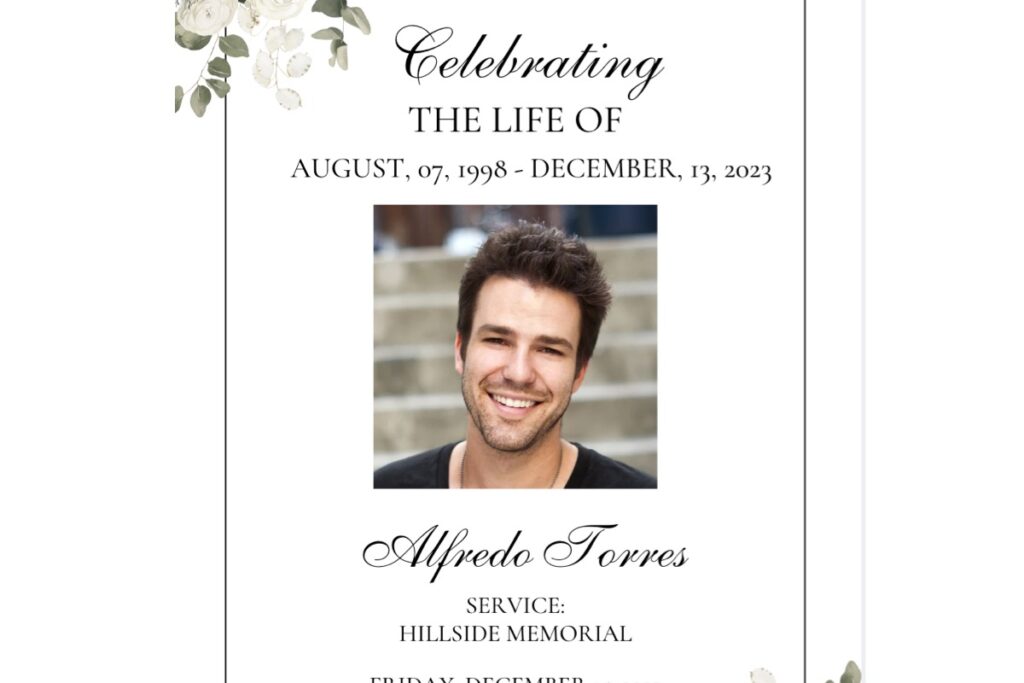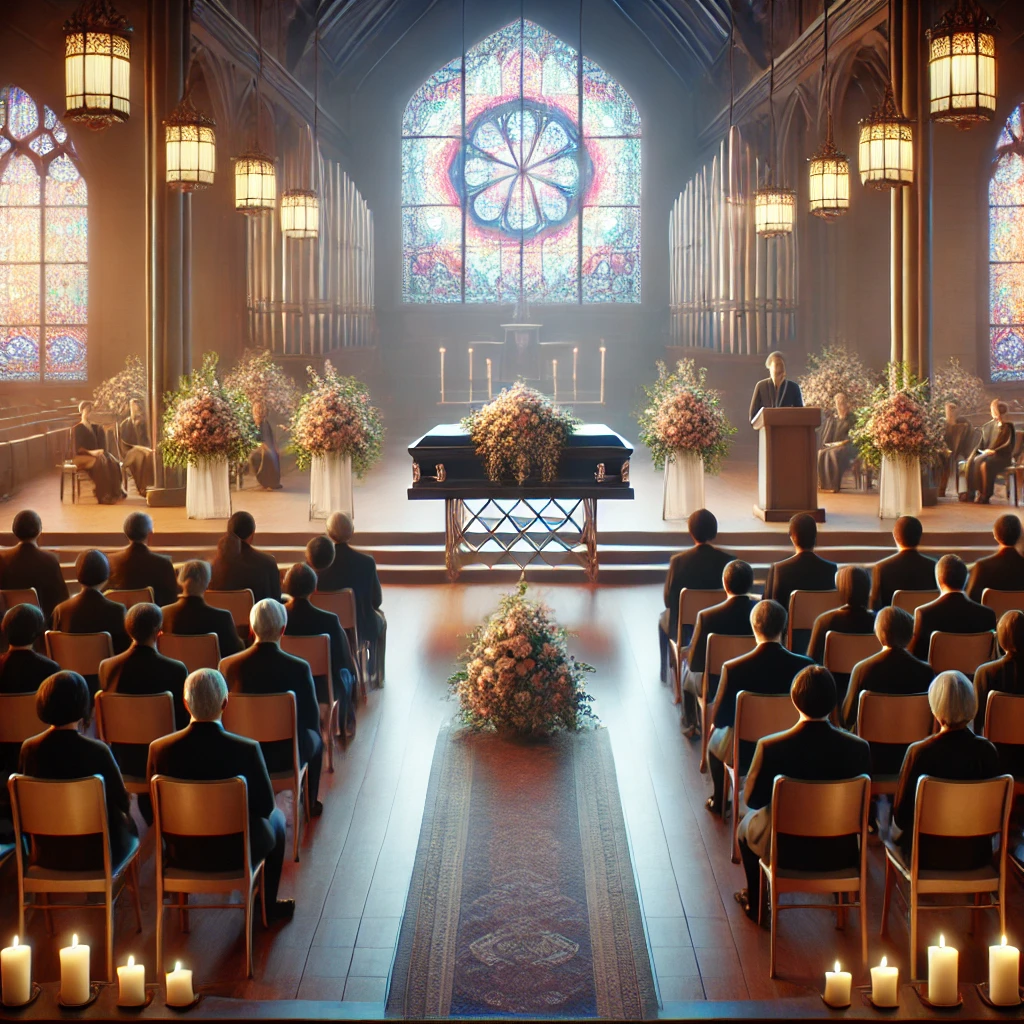Planning a funeral involves many important decisions, and one key element that adds structure and meaning to the event is the Order of Service. If you’ve never been responsible for organizing a funeral before, you may be unfamiliar with this concept. In this post, we’ll explain what an Order of Service is, its importance, and what you should consider including in one.
What is an Order of Service?
An Order of Service is a printed booklet or funeral program handed out at funerals to guide guests through the proceedings. It outlines the events and stages of the funeral or memorial service, helping everyone understand what to expect. More than just a schedule, it also serves as a keepsake for attendees, offering a meaningful way to honor the deceased.
By providing a clear sequence of events, the Order of Service ensures the funeral flows smoothly, and guests can participate in prayers, hymns, or readings. It also serves as a guide for those who may be less familiar with the specific religious or cultural practices being observed.
Why is an Order of Service Important?
The Order of Service plays a crucial role in setting the tone for the ceremony. Here’s why it’s important:
- Provides Structure: Funerals are emotional events, and having a clear plan can help keep the ceremony organized. It helps everyone know what’s happening next and reduces the stress of the unknown.
- Involves Guests: For religious or ceremonial elements like singing hymns or reciting prayers, having a guide allows attendees to actively participate.
- Acts as a Keepsake: The Order of Service is often kept as a memento. Many people appreciate having a tangible reminder of the day and the loved one they came to honor.
- Honors the Deceased: A well-thought-out program reflects the life, personality, and wishes of the deceased, allowing the family to pay tribute in a way that feels personal and meaningful.
What to Include in a Funeral Order of Service
While the specifics will vary based on the type of service (religious, non-religious, etc.), here are common elements found in an Order of Service:
1. Cover Page
The cover page usually includes:
- The name of the deceased
- Their birth and death dates
- A photo
- An optional quote, verse, or prayer
The cover sets the tone for the service and can be designed in a way that reflects the personality or preferences of the deceased.
2. Opening Remarks or Welcome
The program often begins with an introduction or welcome from the officiant, whether a religious leader or funeral celebrant. This may include a few words of comfort and a brief explanation of the service’s flow.
3. Eulogies and Tributes
Listing the names of those delivering eulogies or personal tributes is helpful for guests to know who will be speaking. These speeches are usually from close family members or friends and reflect on the life and character of the deceased.
4. Music or Hymns
Music is a significant part of most funeral services, whether it’s religious hymns, classical pieces, or contemporary songs that had meaning for the deceased. The Order of Service will typically:
- List each song or hymn to be played or sung
- Include lyrics for congregation participation if appropriate
- Note who will perform the music if there are live performers
5. Readings and Poems
Often, specific religious passages, poems, or other readings are incorporated into the service. The program should:
- List the readings and their source (e.g., a Bible verse or famous poem)
- Include the names of the individuals doing the readings
- Optionally, print the text of the readings for guests to follow along
6. Prayers or Blessings
For religious services, the program might contain:
- Prayers or blessings to be read
- Specific instructions for guests regarding participation (e.g., standing, sitting, or reciting aloud)
Including these helps those unfamiliar with the religion follow along respectfully.
7. Funeral Rites or Rituals
Some services include specific rituals, such as the lighting of candles, receiving communion, or a moment of silence. These elements should be clearly outlined in the program so that everyone can follow the proceedings easily.
8. Committal or Final Farewell
If the funeral service will be followed by a committal ceremony at a cemetery or crematorium, this can be included in the program as well. It might note details such as:
- The location of the committal
- Whether guests are invited
- Any final words to be said
9. Closing Remarks
The officiant or family members may conclude the service with final words of gratitude or farewell. These may include thank you messages to those who attended, especially for those who traveled long distances or contributed to the service.
10. Reception or Wake Information
If a reception or wake is planned after the service, it is useful to include this information at the end of the program. Details should include:
- Location
- Time
- Any instructions for guests (e.g., what to bring or directions)
11. Acknowledgments
Often, the family will include a section expressing their thanks to everyone who helped arrange the service or supported the family during their time of grief. This might also acknowledge specific organizations, such as hospices or charities, where donations could be made in the deceased’s memory.
Create an Order of Service Online with Canva or Adobe Express
Creating a professional and personalized Order of Service doesn’t have to be complicated. Today, you can use Canva or Adobe Express to design an Order of Service quickly and easily.
- Canva offers a range of customizable templates specifically for funeral services. You can upload your own images, select fonts, and arrange the layout to match your preferences. Once your design is complete, you can either download it for printing or have Canva print and deliver the booklets directly to you. Click for access to funeral program templates
- Adobe Express also provides a free funeral Order of Service maker that allows you to create a beautiful, personalized design. Adobe’s easy-to-use templates ensure that even if you’re not a design expert, you can still craft a meaningful and professional program. You can access the tool here: Adobe Express Funeral Program Maker.
These platforms allow you to add your personal touches, ensuring the program reflects the life of the deceased person.
Design Tips for an Order of Service
When creating an Order of Service, keep these design tips in mind:
- Keep it Simple: The design doesn’t need to be elaborate. A clean, simple layout helps guests follow along easily.
- Use Photos: Including photos of the deceased, whether on the cover or throughout the program, adds a personal touch.
- Choose Meaningful Symbols: You can include religious symbols or other meaningful icons that reflect the beliefs or interests of the deceased.
- Include Personal Elements: Quotes, poems, or artwork that were significant to the deceased or their family can make the program feel special.
How to Personalize an Order of Service
Making the Order of Service personal to your loved one can be a beautiful way to honor their memory. Consider:
- Their Favorite Music: Include songs or hymns they loved.
- Meaningful Readings: Pick passages or poems that were special to them.
- Personal Quotes: Use their own words, if appropriate, in the form of quotes or sayings they often used.







